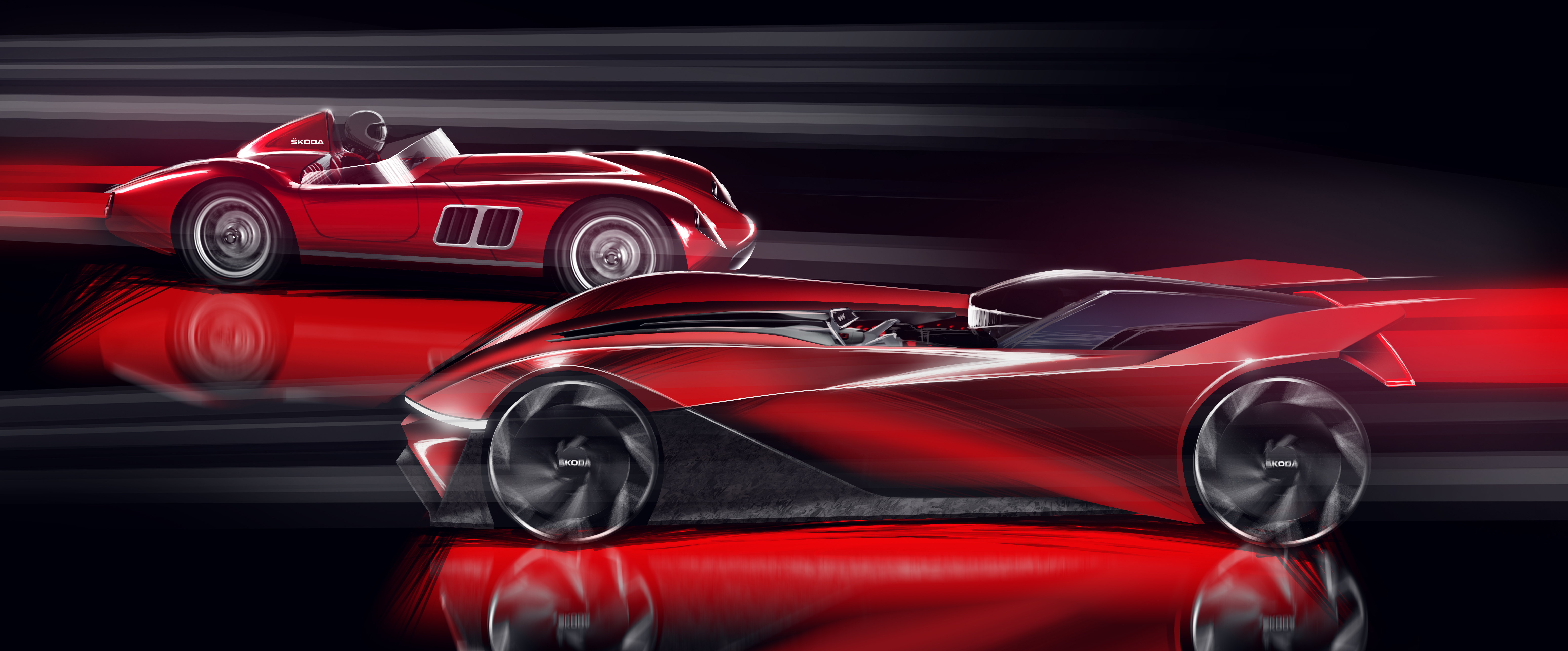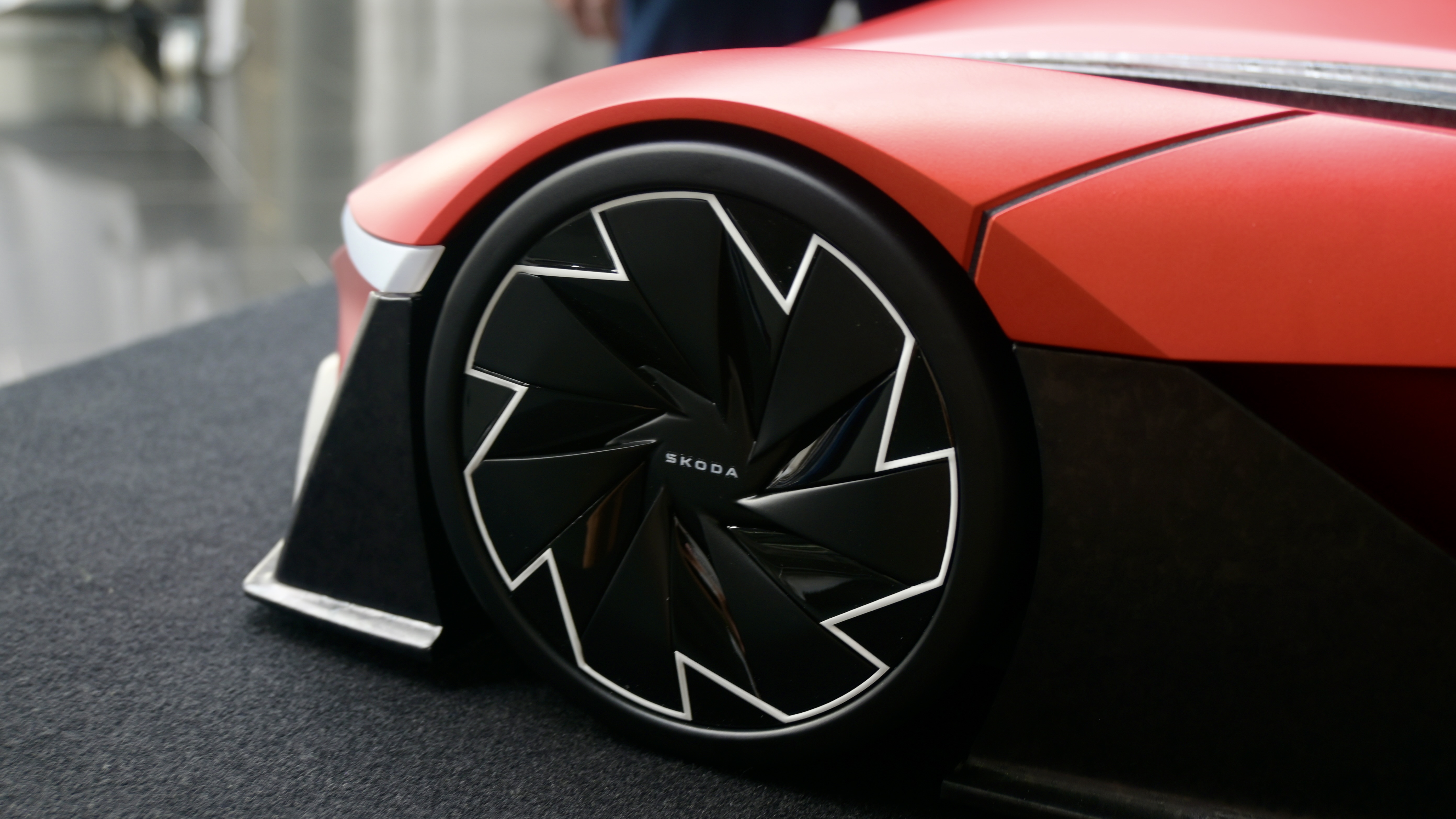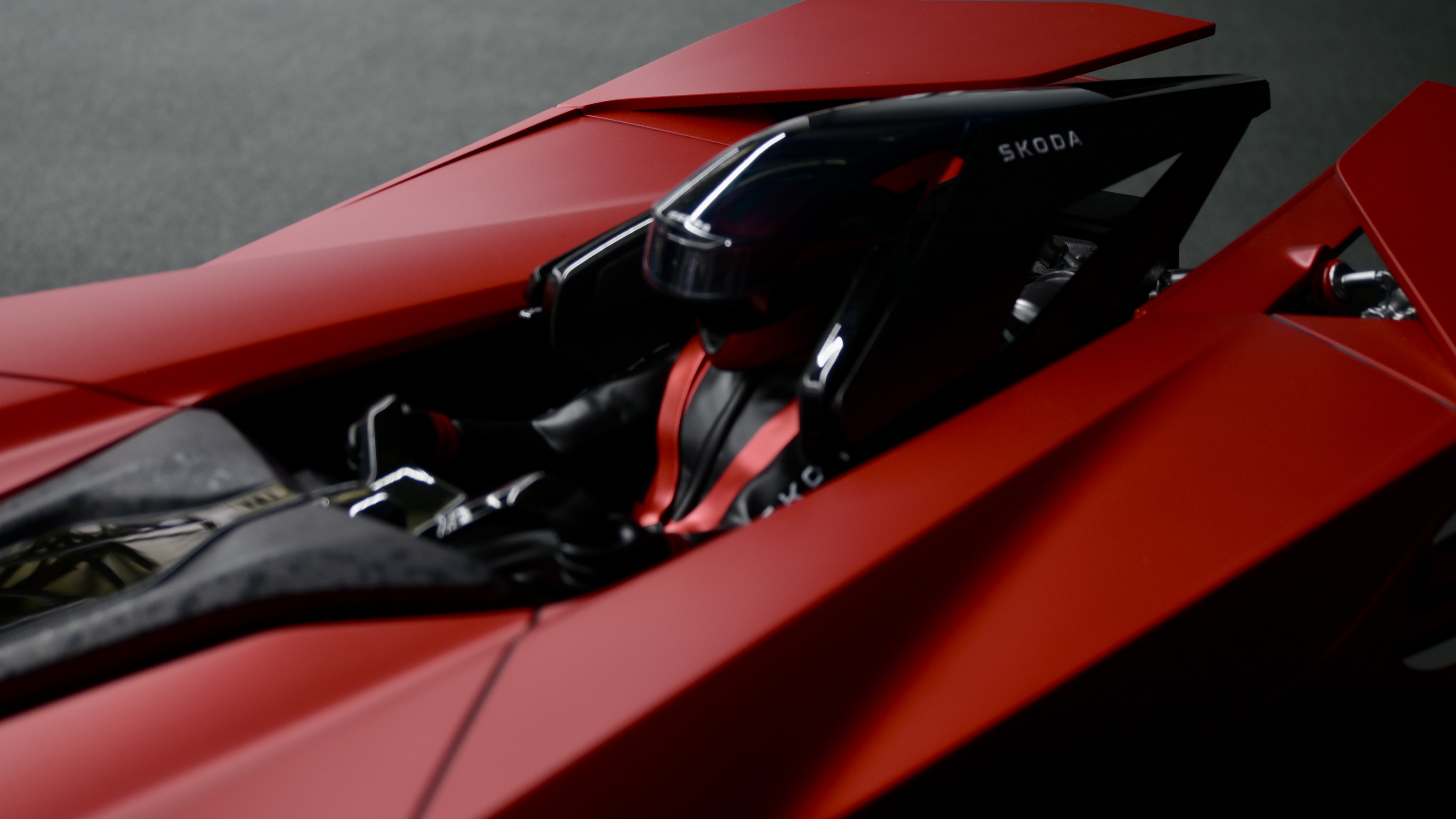3D model
Despite the VISION GT study being designed primarily for the gaming and digital world of the future, a physical model of the concept was eventually also created for the purpose of physical presentation at the Design and Transformation exhibition in Brussels. The scale model was primarily made using 3D printing, but the skilled craftsmanship of the ŠKODA Design department was also important.
 ŠKODA Design reworked the ŠKODA 1100 OHC from 1957.
ŠKODA Design reworked the ŠKODA 1100 OHC from 1957.
“We had to divide the model into parts and construct them ourselves, which meant determining their thicknesses, how they would fit together, what surface finishes they would have and so on,” says Klára Valentová, who led the work on the 80-centimetre-long model. “We had to take into account the required quality of the individual surfaces and how to put everything together so that the joints wouldn’t look bad.”
 The 3D model of the ŠKODA VISION GT concept car is realistically detailed.
The 3D model of the ŠKODA VISION GT concept car is realistically detailed.
The parts were then printed on various 3D printers, with the printed parts then proceeding to manual machining. The modellers sanded and filed them down, and when everything fitted, the next step was to paint the parts or cover them with foil, as well as hand-painting the details and illuminating the model. "Prior to this model, we’d done similar work on the VOITURETTE study car from the Icons Get a Makeover series,” adds Valentová, adding that VISION GT is a follow-up to that series.
 Andrej Denysko and Andrii Bahriichuk (first two from left) create the digital motion of the ŠKODA VISION GT. Romain Bucaille and Jounggeen Kim (third and fifth from left) created the exterior. Filip Krol and Julien Petitseigneur (first and third right from right) worked on the interior.
Andrej Denysko and Andrii Bahriichuk (first two from left) create the digital motion of the ŠKODA VISION GT. Romain Bucaille and Jounggeen Kim (third and fifth from left) created the exterior. Filip Krol and Julien Petitseigneur (first and third right from right) worked on the interior.
Visitors to the Design and Transformation exhibition at the Design Museum in Brussels can thus admire not only the beautiful original ŠKODA 1100 OHC, but also the VISION GT study, both in its digital form and as a model that symbolises the link between the digital world of the future and the Czech carmaker’s historical tradition. The exhibits are on display alongside the products of twelve other Czech companies and their designers until 8 January 2023. The exhibition is organised in Brussels by the Prague School of Applied Arts on the occasion of the Czech presidency of the Council of the European Union.
 The historic ŠKODA 1100 OHC racing car meets the ŠKODA VISION GT concept sports car at the Design and Transformation exhibition in Brussels.
The historic ŠKODA 1100 OHC racing car meets the ŠKODA VISION GT concept sports car at the Design and Transformation exhibition in Brussels.


























